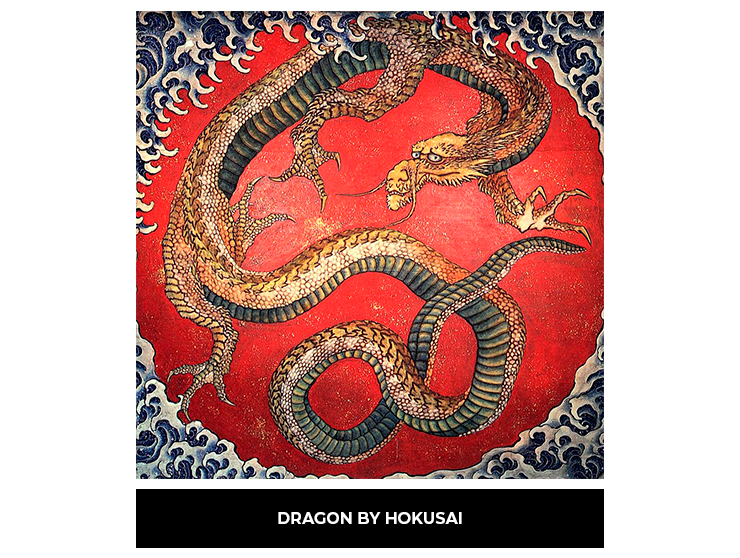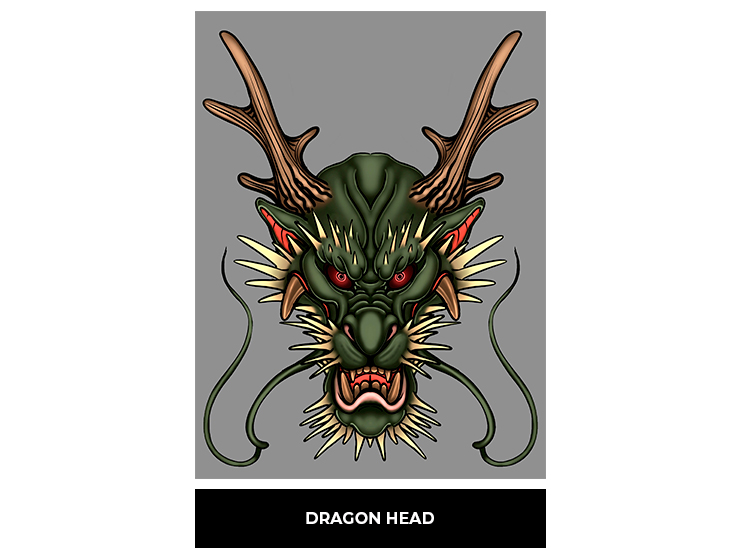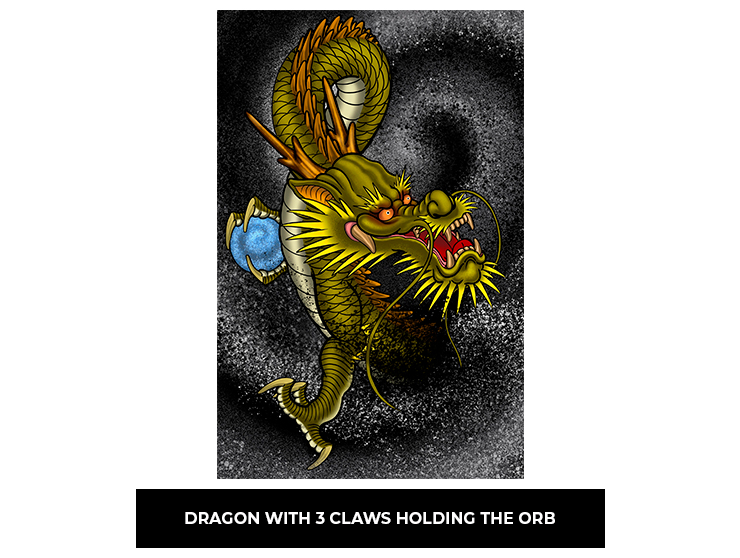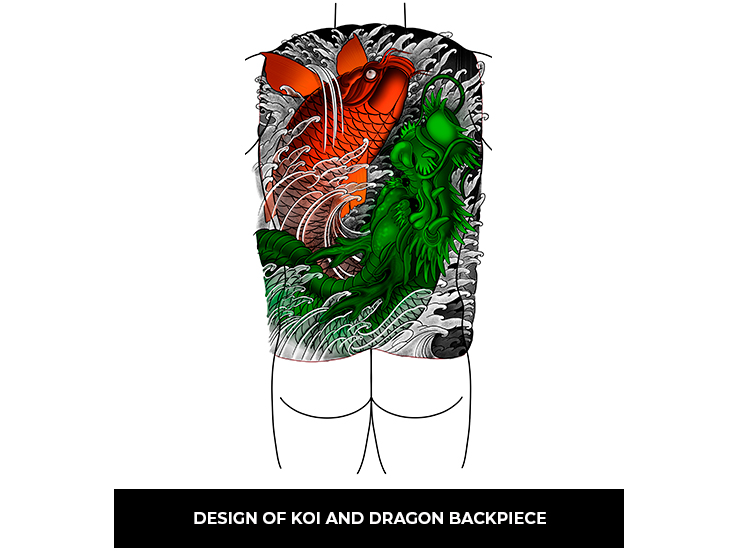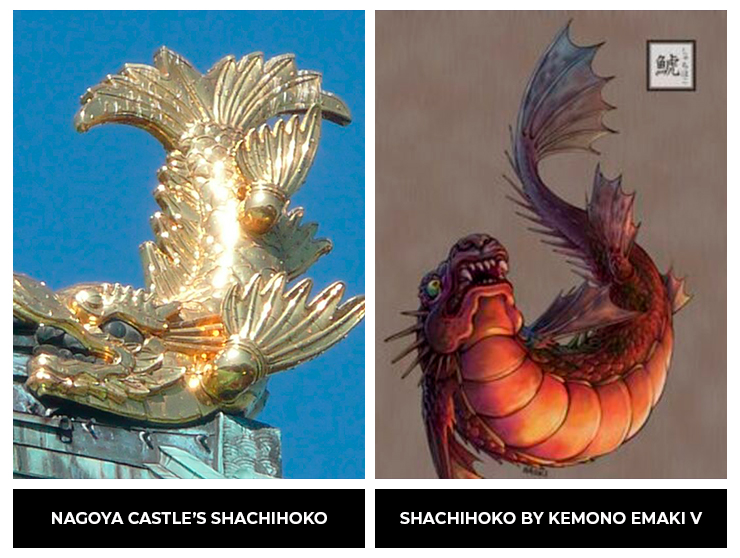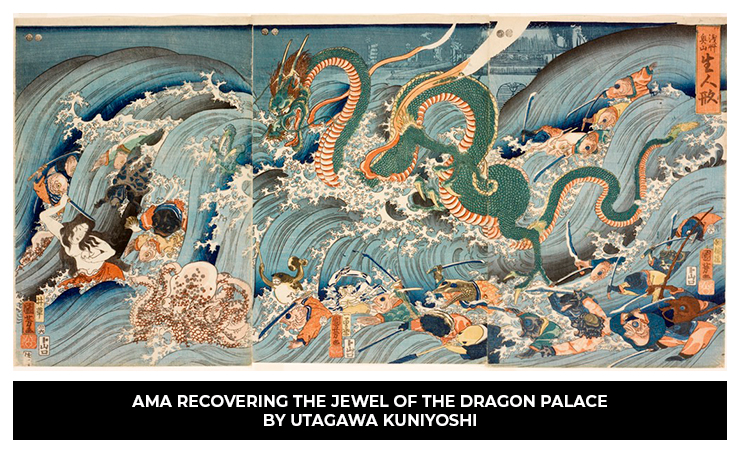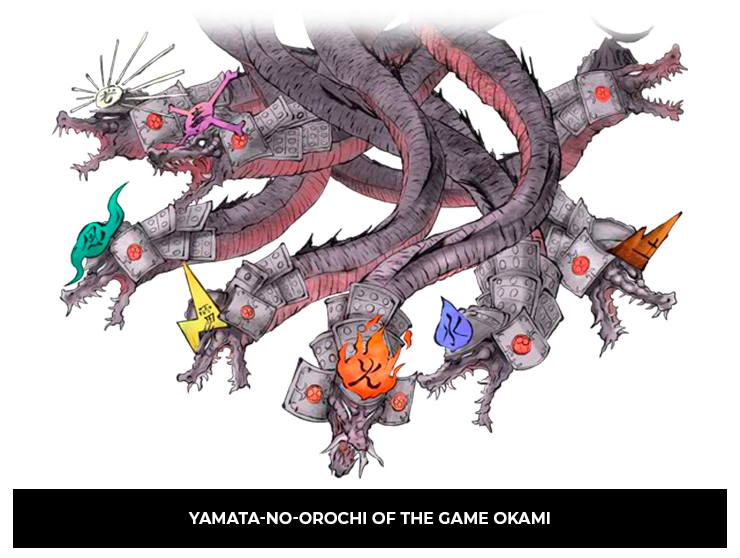Japanese Dragon – 龍 (Ryū) or 竜 (Tatsu)
The dragon is by far the most famous mythological animal. Its appearance varies from a region to another and it also varies in time. For example, everyone is familiar with the medieval dragon that looks more like a lizard, while the Chinese dragon looks more like a snake.
In Japan, the dragon is considered to be a mythological creature, meaning that it’s not a monster and it’s not someone who has been hexed/cursed. It’s a rare animal! A dragon with one head is considered benevolent, while a dragon with multiple heads is considered evil.
Appearance
In old Japanese textbooks, the dragon is translated to “Snake or Naga”. This is because they are all considered to be the same animal: an aquatic serpent.
Traditionally, the dragon has the wingless body of a snake, the head of a camel, the antlers of a deer, the eyes of a hare, the ears of a bull, the scales of a koi, the paws of a tiger, the claws of an eagles and whiskers.
Still, the dragon is a mythological creature, therefore its appearance varies accordingly to the artist’s will. There is one important particularity: the Chinese dragon has 4 to 5 claws while the Japanese dragon always has 3 claws.
The dragon can be seen in tattoos paired with the tiger. The dragon reigns in the sky, while the tiger dominates the land. Together, they are two very strong creatures that represent the balance of power. The dragon can also be paired with a phoenix, which would represent union in love or in rivalry. Like in the Yin Yang symbol, the emperor would wear the emblem of the dragon (masculine), while the empress would wear the emblem of the phoenix (feminine).
Symbolism
The symbol of the dragon (and of the snake) is one of wisdom and protection. Associated with water, Edo period firefighters were the firsts to get dragon tattoos as a talisman against fire. Dragons are also known for their strength, intelligence and compassion.
Usually they are tattooed with a background of clouds which symbolizes immortality and eternal youth. They can be seen holding a round jewel: this pearl lets the dragon travel through realms. The orb is also said to contain the spiritual essence of the universe and symbolises wisdom and luck.
As mentioned, the dragon is a mix of different animals. Thus, it is used to represent life with all its different milestones: The classic Chinese story of the dragon tells of a koi fish that decided to go upstream. While swimming he met different animals with unique characteristics. With each animal he met, he gained an attribute of that animal. For example: after meeting the hawk, it gained the hawk’s claws. After meeting the snake, it took the snake’s body. Until it finally reached the top of the river with all its new attributes and became a dragon. This story can be used to represent milestones or important people you meet in your life; each and every important person or event in your life changes you and turns you into a dragon.
There are also tattoos of transitioning dragons. An animal half fish and half dragon, like the famous shachihoko, is usually used in tattoo to express a journey that has begun, but that hasn’t ended yet. Statues of shachihoko can be found on roofs of temples and castles as a talisman against fires.
Famous dragon stories
Ryujin is the God of the sea. He is a majestic dragon that can control tides with a magical jewel and he lives in a beautiful palace at the bottom of the sea. There are multiple tales involving Ryujin.
Yamata-no-orochi is an evil, eight-headed dragon who would terrorize a village. Each year, he would devour a young girl. Susano-o, God of the storms, managed to kill him and found in his dead body the famous Kusanagi-noTsurugi, the Japanese version of the Excalibur.
